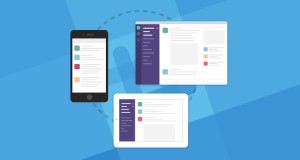 I love e-mail. I’m pretty sure my productivity would tank if e-mail wasn’t available to help me streamline the way I work. In fact, almost everyone I know uses e-mail – clients, colleagues, family, friends – so it’s easy for me to make it my primary mode of communication.
I love e-mail. I’m pretty sure my productivity would tank if e-mail wasn’t available to help me streamline the way I work. In fact, almost everyone I know uses e-mail – clients, colleagues, family, friends – so it’s easy for me to make it my primary mode of communication.
However, just because e-mail is quick, easy and more informal than a phone call or face-to-face meeting does not mean your e-mail communication should be completely relaxed. If you want to support your reputation as a professional, you should follow general business writing guidelines with all of your written communication, e-mail included.
Here are some of the biggest mistakes I’ve come across in e-mails…how many do you make?
Your e-mail goes on and on…and on.
If your message is more than a screen length and takes more than a couple of minutes to read and digest, it’s probably too long. Try sticking with only one subject per e-mail, and when you do need to include more information, use bolded subheads so the most important details are clear.
Your subject line isn’t descriptive of the message content.
I feel tricked when I open a message from a client that says URGENT in the subject and is marked high priority only to find a minimal non-urgent issue. Write your subject so it explains what the message is about. The recipient should be able to just read the subject and have an idea what’s in the body, how important it is and when they will need to act on it.
You don’t provide any contact information.
I can’t tell you how many e-mails I receive that are signed by a Jim, Sue or Bob with no other identifying information. And on top of that, many times the e-mail addresses used are through free accounts, so there’s no way to track down who exactly sent the message (see the next point for more on this). All initial communication should include your e-mail signature, which typically provides your full name, company, and URL at a minimum. A phone number, title and restating your e-mail address doesn’t hurt either.
You use a non-professional address for business communication.
Gmail is popular. It’s free, it provides easy mobile access, you get lots of storage, and everyone uses it. I understand that. But for me, getting a business related e-mail from a sexybabe756 address is a big business faux pas. Ideally, you should be using a business address (i.e., yourname@yourbusinessdomain.com) for business e-mail. If that’s not a possibility, create a free address that won’t hurt your professionalism and still makes a good first impression.
There are numerous spelling errors.
Spell checking is easy. Make it a default setting in your e-mail client to check all messages before you send them. Yes, e-mail is more informal and there is a little more leniency with spelling and grammatical errors, but it looks awful to send a message riddled with errors. And please, save the trendy abbreviations (thx, plz, u) for Twitter or text messages.
The tone of your message is questionable.
Some conversations are not meant to be conducted via e-mail because it’s not always easy to convey a certain tone in e-mail like it is in verbal communication. Being terse, criticizing, or even a failed attempt at a joke can make the recipient feel attacked and disrespected. If your message tone is a little rough (re-read it to make sure), or even just comes off that way to the recipient, you’re probably better of picking up the phone. And it’s never a good idea to send a message written in the heat of the moment when your anger may be at full boil. Take some time to cool off before hitting send.
I admit, I tend to be a little too verbose in some of my messages. I’ve found that going away from the e-mail for a little while and then coming back, re-reading and editing is extremely helpful. Now it’s your turn…how many of these mistakes are you guilty of?
Image credit: Salman Rana
Alyssa Gregory is a digital and content marketer, small business consultant, and the founder of the Small Business Bonfire — a social, educational and collaborative community for entrepreneurs.



